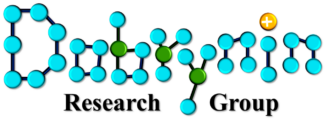Zhen Cao and Andrey V. Dobrynin
Detachment of rigid nanoparticles from soft, gel-like polymeric surfaces is studied by using a combination of the molecular dynamics simulations and theoretical calculations. Simulations show that detachment of nanoparticles from soft surfaces proceeds through a neck formation. Analysis of the simulation results demonstrates that the magnitude of the detachment force f* depends on the nanoparticle radius Rp, shear modulus of substrate Gs, surface tension of substrate γs, and work of adhesion W. It is controlled by the balance of the elastic energy, surface energy of the neck, and nanoparticle adhesion energy to a substrate and depends on the dimensionless parameter δ ∝ γs(GsRp)−1/3W–2/3. In the case of small values of the parameter δ ≪ 1, the critical detachment force approaches a critical detachment force calculated by Johnson, Kendall, and Roberts for adhesive contact, f* = 1.5πWRp. However, in the opposite limit, corresponding to soft substrates, for which δ ≫ 1, the critical detachment force f* ∝ γs3/2Rp1/2Gs–1/2. All simulation data can be described by a scaling function f* ∝ γs3/2Rp1/2Gs–1/2δ–1.89.

